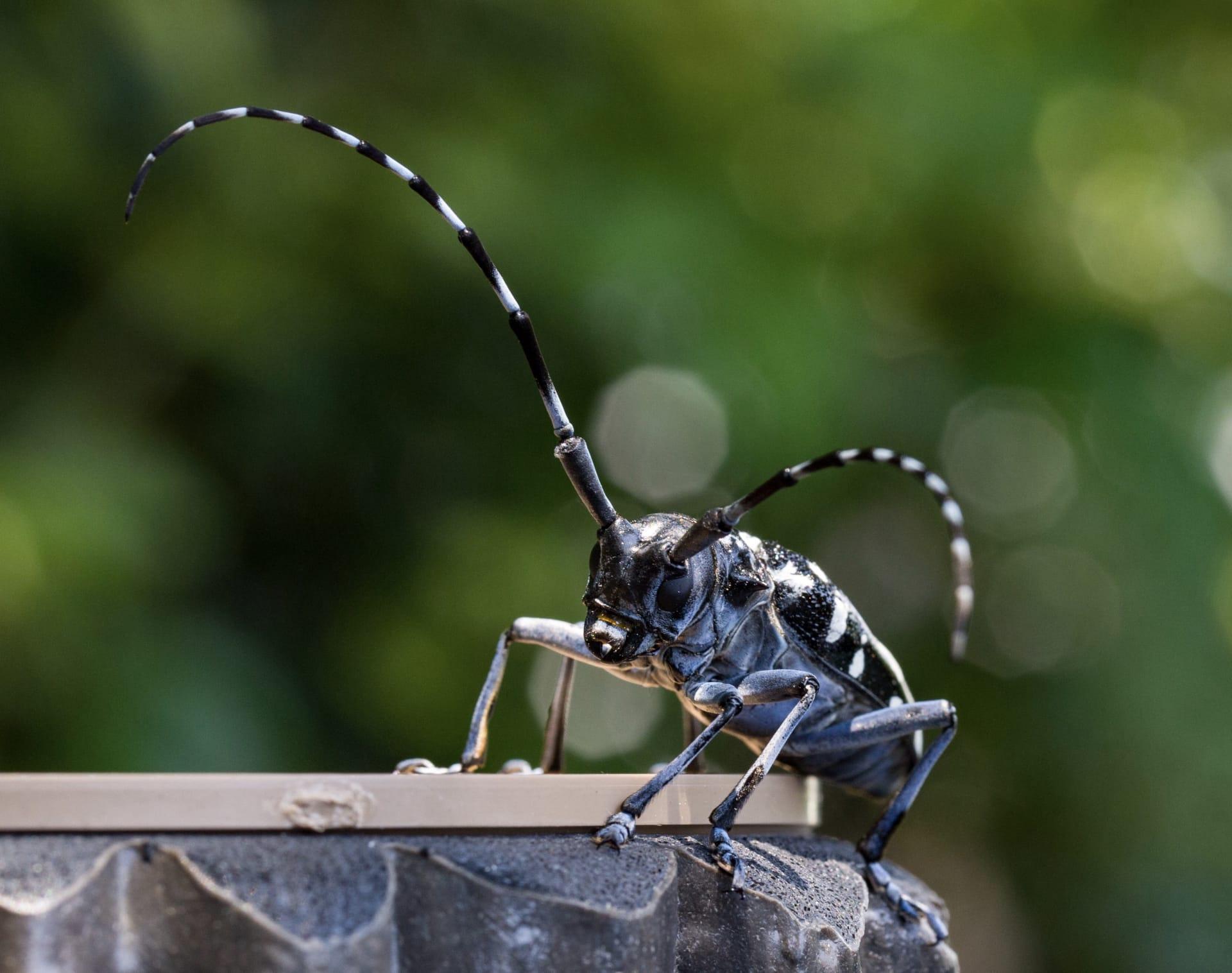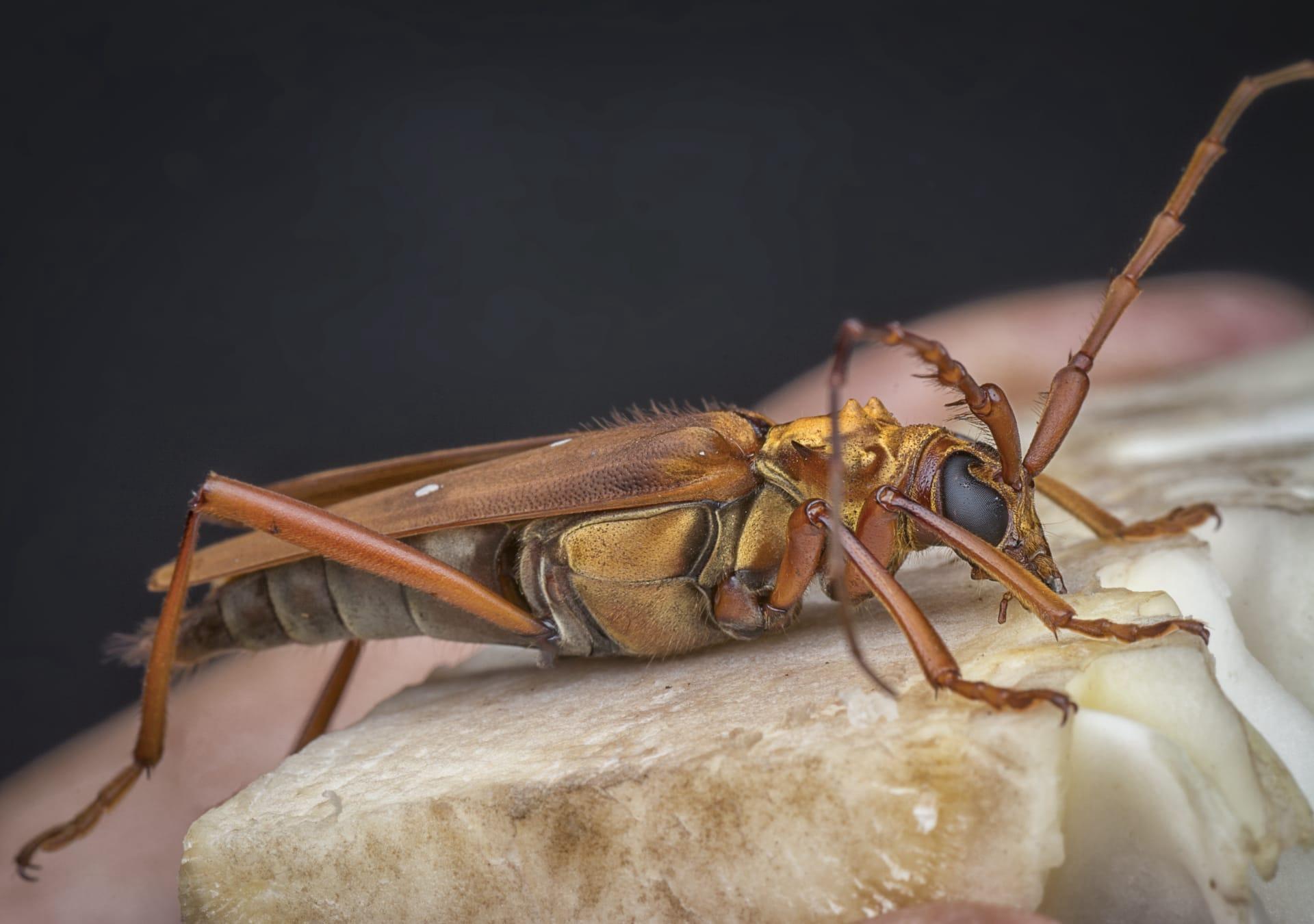Asian Beetle
- Home /
- Mini Encyclopedia /
- Animal /
- Asian Beetle
1
The Asian Beetle, scientifically known as Harmonia axyridis, belongs to the family Coccinellidae, commonly known as ladybugs or ladybirds. This species, characterized by its dome-shaped body and varying number of spots, has over the years been subject to numerous studies. Its size ranges from 0.3 to 0.4 inches (7 to 10 mm) in length, with a colorful exoskeleton that can be yellow, orange, or red, decorated with distinctive black spots. The variation in spot number and coloration is a fascinating aspect of their genetics, making each beetle somewhat unique.
Originally native to eastern Asia, particularly in countries like China, Korea, and Japan, the Asian Beetle has seen its habitat expand dramatically. Due to its effectiveness in controlling agricultural pests, it was intentionally introduced in various regions including North America and Europe. This introduction, primarily in the late 20th century, led to its widespread distribution. Today, it is commonly found in many parts of the United States and Europe, thriving in a range of habitats from agricultural lands to urban gardens. This expansion, while beneficial for pest control, has also raised concerns about its impact on native species and ecosystems.

2
Question: Do Asian Beetles pose a threat to humans or domestic environments?
Answer: A common misconception about Asian Beetles is that they are harmful to humans and pets. In reality, these beetles are not aggressive towards humans and are unlikely to bite. However, they can be a nuisance, especially when they invade homes in large numbers seeking warmth during colder months. While they do not cause structural damage, their presence can be bothersome. Additionally, some people may experience allergic reactions to their exoskeletons or the yellow fluid they release as a defense mechanism. It's important to manage their populations indoors through preventive measures like sealing entry points and using gentle methods of removal.

3
One of the most remarkable survival strategies of the Asian Beetle is its ability to adapt to different seasonal environments. During the warmer months, they are active predators, feeding voraciously on aphids and other soft-bodied insects, playing a vital role in controlling these agricultural pests. As winter approaches, they exhibit a unique behavior known as overwintering. They gather in large numbers in warm, secluded places, often in human-made structures, to survive the cold. This clustering not only provides warmth but also enhances their chances of survival through communal hibernation.
Another key survival mechanism is their ability to produce a yellowish defensive chemical when threatened. This substance, which has a distinctive unpleasant odor, serves as a deterrent against predators. The chemical not only repels potential threats but also can stain surfaces, adding to the reasons why they are often considered a nuisance when they invade homes. Furthermore, the coloration and spots on their exoskeleton are not just for show; they act as a warning signal to predators, indicating that they might not be a tasty or safe meal.

4
In the ecosystem, the Asian Beetle plays a dual role. On one hand, it is a beneficial predator, helping control populations of agricultural pests like aphids and scale insects. This natural pest control service is invaluable to farmers and gardeners, reducing the need for chemical pesticides. On the other hand, its introduction outside its native range has raised ecological concerns. In non-native habitats, the Asian Beetle can outcompete and displace local ladybug species, potentially disrupting local ecosystems. Its voracious appetite not only targets pests but can also reduce populations of beneficial insects, affecting the balance of local food webs.
The beetle's impact on agriculture is significant. By controlling pest populations, they aid in maintaining the health of crops, which can lead to higher yields and reduced crop losses. However, their presence in vineyards can be problematic. When inadvertently harvested with grapes, Asian Beetles can taint the taste of wine with their defensive chemicals, posing challenges for winemakers. This highlights the complexity of their role in ecosystems, where they are both helpful and, at times, a hindrance.

5
Film: "The Beetle's Balance" is a documentary produced in the United States in 2021. It explores the intricate life of the Asian Beetle, delving into its role as both a pest controller and an invasive species. The film beautifully captures their life cycle, from larvae to adulthood, and discusses the ecological and economic impacts of their widespread distribution. Interviews with entomologists, farmers, and conservationists provide a multifaceted view of the challenges and benefits associated with this species.
Book: "Ladybug Legacy: The Asian Beetle in New Worlds" is a comprehensive book authored by Dr. Emma Richardson, published in the UK in 2020. It offers an insightful look into the journey of the Asian Beetle from its native habitat in Asia to its introduction in other continents. Dr. Richardson combines scientific research with engaging narratives to explore the beetle's ecological, economic, and cultural significance.
Book: "Insects Unveiled: Harmonia Axyridis" is a book by Canadian entomologist Mark L. Thompson, released in 2019. This book provides an in-depth analysis of the biology and behavior of the Asian Beetle. Thompson uses easy-to-understand language to describe the beetle's adaptive strategies, its impact on ecosystems, and its role in biological pest control. Richly illustrated, the book is both an educational resource and a visual treat for readers interested in entomology.